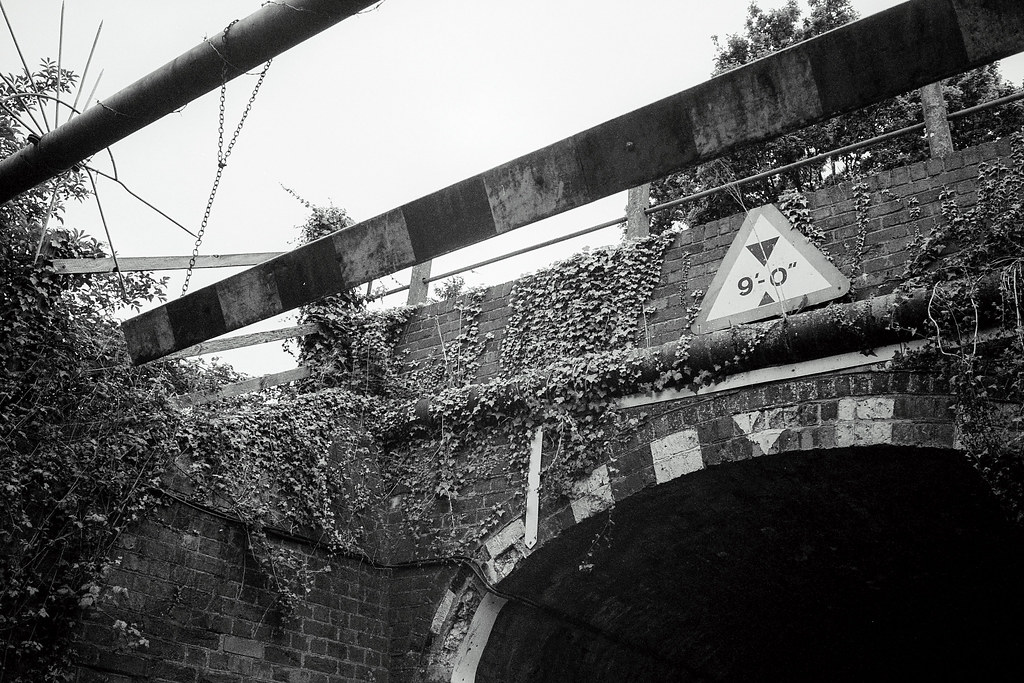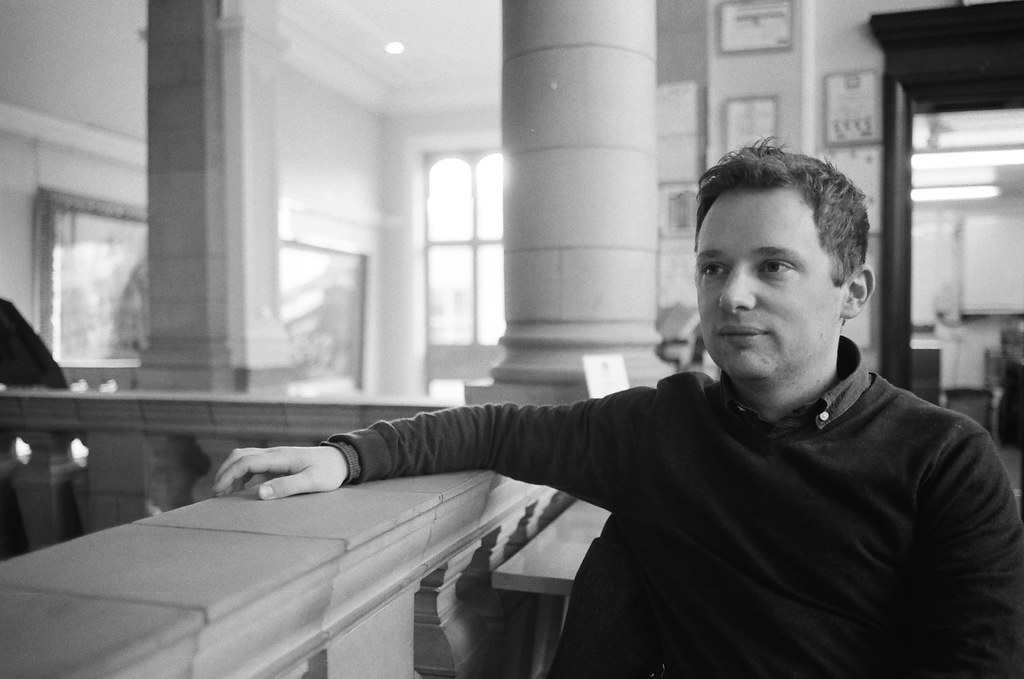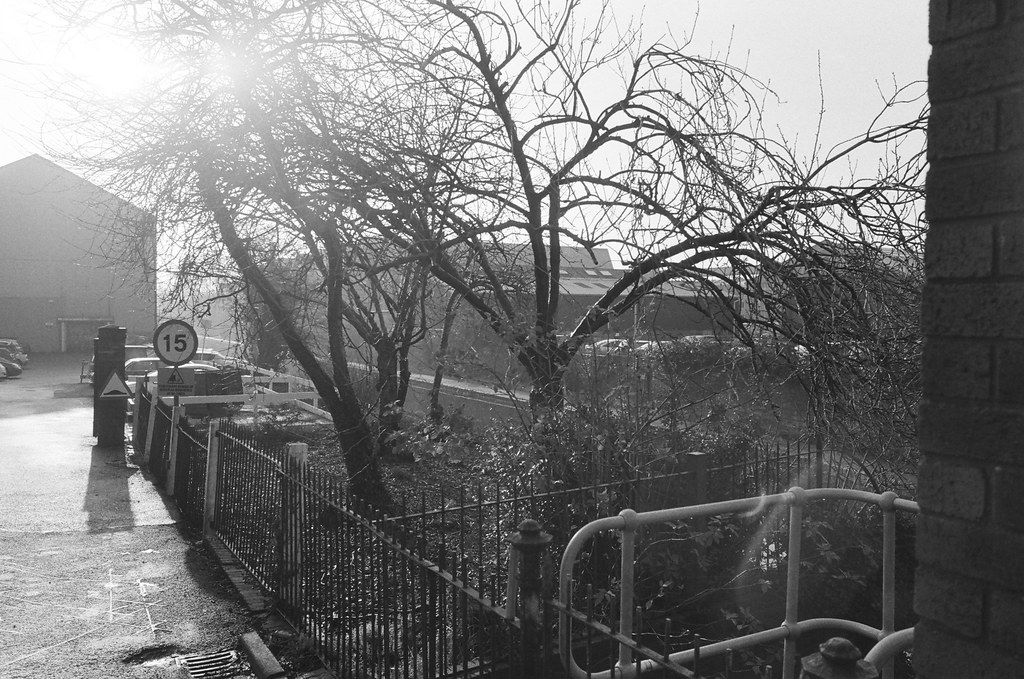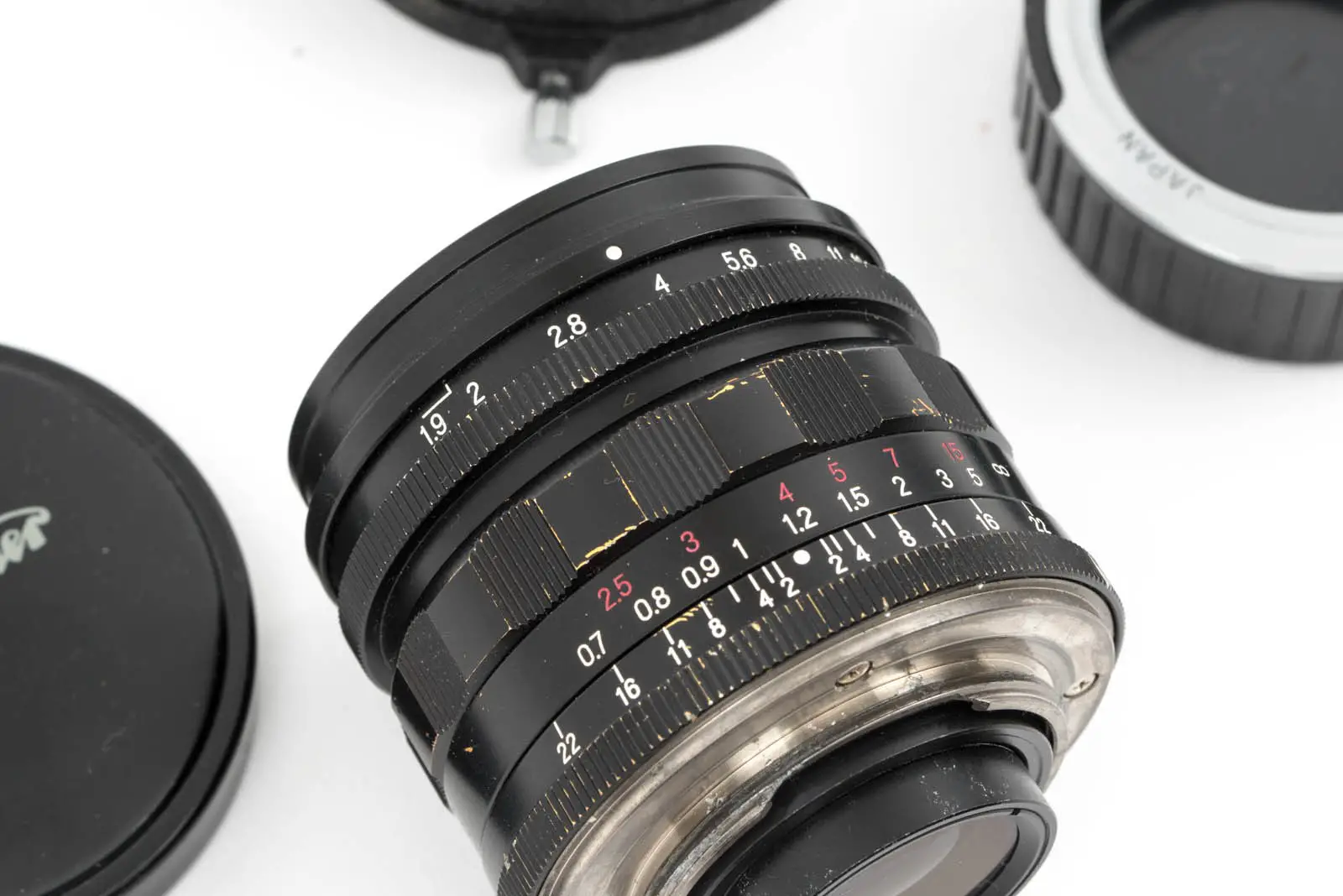Before I get into this, I just want to point out, this isn’t intended as a negative slant against the Voigtlander 28mm f/1.9. It is instead intended as a cautionary tale of a mentality I’ve suffered through owning one of these lenses; a negative mentality, that it would be unfair to hold the lens responsible for. I owned this lens for years, but I very rarely used it, not because it’s not a good lens, but just because it wasn’t quite right for me… And that’s despite the fact that I spent the entire time I owned it trying to convince myself that it was.
I’ve sold it now – a few weeks ago in fact – though really it was replaced as a focal length by the tiny Voigtlander 28mm f/3.5 quite some time before it went. I even sold the f/1.9 once before to my mate Ben, though for reasons I can’t quite explain, I ended up buying it back off him when he picked up the newer f/2 version. I hadn’t used it much when I’d first had it, I didn’t miss it when I was gone, and when I bought it back, I still didn’t use it. The whole time I had it, and the reason I bought it back was because I kept in the back of my mind that I “needed” a fast 28mm. Yet despite this “need”, I never found a time I actually required the lens to take a photo I wished to take.
I suppose that’s what driving me to write this post, this disparity between perceived need and actual need was so great that it caused me to continue to own a lens, be convinced it was of use to me, but not use it in any serious way for years. It’s sold now, this time for good, and parting with it after all that time and multiple ownerships has been an almost cathartic experience. It’s felt like the lens has been hanging around waiting for that moment where my photography finally finds a way to release its potential.

The right intentions
So how did I end up in this situation for so long? Well, fortunately I have a fairly reasonable justification for the original purchase. My early experiences with film rangefinders were often accompanied by experiences with a digital rangefinder; the Epson R-D1. I used to shoot R-D1 nearly as much as I did the Voigtlander R2a I had contemporary to it. It had a cropped sensor, 1.56x crop if I remember rightly. It also had frame lines for 28mm, 35mm and 50mm focal length lenses which gave approximately 44mm, 55mm and 75mm equivalent focal lengths respectively. I was a big fan of my 35mm f/1.4 Voigtlander lens at the time, but sometimes found it a little long for comfort on the Epson compared to the R2a. I wanted something wider but equally as fast. The Voigtlander 28mm f/1.9 was the closest thing to that requirement I could find.
Unfortunately once I’d bought the Voigtlander 28mm f/1.9, I didn’t shoot it that much. The Epson only went up to 1600iso and since I used to shoot primarily in dark pubs, every ounce of light gathering power was helpful. I also preferred the character of the 35mm f/1.4, and moreover its compact size made it a more comfortable lens to take out. In short, if memory serves, I stuck to the 35mm f/1.4 for the large percentage of the time and the 28mm stayed on the shelf. Really I suppose, that would have been the sensible time to have sold it…
My use of rangefinders dwindled a little for a few years. It’s odd to look back at it now, but there was an occasion when I was much more interested in Nikon SLRs. At one point I had pretty much all of the Nikon manual focus SLRs. I shot digital Nikons at work, and when I took photos recreationally, more often than not it was with one of those digital cameras or a Nikon F(something) and a 50mm f/1.2 (a fast lens(!)). Throughout this time I remained confident that my enjoyment with rangefinders would return, and whilst I sold some of the gear I’d accumulated, the 28mm f/1.9 remained steadfast in my lens box. Time went on and regardless of the kit I was using, my sense of a necessity to own fast lenses continued.
The fast/expensive lens misconception
Looking back at those times now I find I have an increasing sense of my own prior naivety. There’s what I think is a bit of a misconception with lenses that often makes me a think of a scene in a favourite comedy series called ‘Black Books’. If you’re not aware of it, look it up, it’s genius! If you are aware of it you might remember this scene from the episode ‘The grapes of wrath’ where Manny and Bernard are put in charge looking after a friend’s house. Through Manny’s stupidity they accidentally drink some very old and very valuable wine intended as a gift for the pope, get quite drunk and proceed to have the following somewhat slurred discussion:
Bernard: Old wine… is good wine…
Manny: Yes… but expensive wine is good wine also
Bernard: But the older the wine… the gooder it is
Manny: Yes… but by the same token, the more expensive the wine… the gooder it is also
This drunken slur is obviously filled with holes. Spending a lot on wine doesn’t necessarily mean you’re going to like the flavour, nor does buying an old wine necessarily mean it’s going to taste any better than a younger wine. How I think this relates to lenses is hopefully obvious. If you take out the word ‘old’ and replace it with the word ‘fast’, and then replace the word wine with lens/lenses you end up with this.
Bernard: Fast lenses… Are good lenses…
Manny: Yes… but expensive lenses are good lenses also
Bernard: But the faster the lens… the gooder it is
Manny: Yes… but by the same token, the more expensive the lens… the gooder it is also
In short, it turns into how I think some (including a younger version of myself) perceive the camera lens. The Noctilux is (once again on this blog) an obvious candidate for poking a stick at here. It’s fast and it’s expensive and often gets placed upon a pedestal for either or both of those attributes. And this is despite the fact that it’s actually broadly impractical for most normal day-to-day needs where something smaller and not quite as fast does the job in a much more convenient way.
Now, this is not to say that I disapprove of the existence of ultra fast lenses, or indeed the people who choose to shoot them. If you make good use out of an ultra fast lens, great. But, broadly speaking, the people who do make good use out of them have a specific set of a few requirements, not just one. So for example, someone who owns a Noctilux might own one because they enjoy shooting 50mm AND they like absurdly narrow depth of field. That combination might just warrant the sacrifice imposed by the size and cost. But, if someone only bought a Noctilux just because they like shooting 50mm, you might ask them why they spent so much money. Or if they just like narrow depth of field, you might wonder why they don’t just shoot a longer but slightly slower and probably very much cheaper lens.
I’m sure it’s fairly obvious how this all related to my story?! The Voigtlander 28mm f/1.9 was one of the last vestiges of a dying mentality in me. A mentality I’d had when I was younger, less experienced and less in tune with my own actual needs as a photographer. I thought I needed faster lenses, and specifically I thought I needed a wide-angle fast lens. In practice I just never shot with one because the two attributes of fast and wide never crossed paths within the realms of what or how I want to take photos with the camera the lens fits onto.

The specifics of a lack of use
But, short of a lack of desire to never shoot a fast wide for reasons of achieving a certain photographic outcome, there is another reason I never shot with the lens… I just never carried it around with me.
I like small gear
Sometimes I have to remind myself why I started this blog, it’s simple really, it was through a love of small cameras. In fact, when I started this blog it was just about compact cameras. Over time I realised I couldn’t not include rangefinders, I was shooting more with them, but they are also cameras designed to be small. This desire to carry smaller kit impacts on my shooting. I don’t like carrying bigger cameras, and as such (by means of extreme example) I don’t shoot medium format. Because I don’t shoot medium format, my photos will never look like medium format photos, and however much I like the way medium format photos look, there’s no point in me buying a medium format camera, as I just won’t use it.
A perhaps more relevant example of all this – and hopefully also of my slightly more rational approach to kit in more recent years – was when I bought a 50mm Voigtlander f/1.1. I bought it because I like shooting 50mm AND I enjoy shooting in available light. I sold it because it was too big and as such found that I didn’t use it – and that was despite me actually liking the lens. I replaced it with the 50mm Sonnar, which if you read my review you will see I initially bought as a punt based on its tiny size.
My situation with the 28mm lenses was no different. I didn’t use the f/1.9 because I didn’t feel strongly enough about shooting wide-angle low lit photography to carry a slightly bigger 28mm. Yet when I bought the 28mm f/3.5 lens, it ended up getting used way more. This was because – you’ve guessed it – it was smaller. In actual fact, in real terms it’s probably not that much smaller than the f/1.9, it can’t be more than 100g lighter and not much more than a centimetre or so shorter, but comparatively speaking I barely notice when I have it in my pocket. Since I find it less fuss to carry a small second lens than a big one, I find myself carrying it sometimes, and as such, I also find myself using it.
To go back to Manny and Bernard for a moment, the little f/3.5 lens I now shoot is akin to that cheeky £5.99 bottle of red that seems to go against their drunken summary of what makes good wine. It’s not expensive and it’s no vintage (it’s not fast), but you could drink it all day, and even a connoisseur wouldn’t turn their nose up at it.
In the 28mm f/3.5 I have a lens that cost me less money and is less fast, but actually got used, rather getting left on the shelf to age. (Just a point of note here – as my metaphor is getting a little confused, I just want to clarify: leaving a lens to age, won’t make the maximum aperture any bigger… …)
Interestingly, I think the Voigtlander 28mm f/3.5 is actually a better lens than the f/1.9 too – it’s sharper and less prone to flare – but that’s a story for another post.

Obvious (rather than profound)
The simple message here is pretty damned obvious I’m sure…? If you don’t use a bit of kit, there’s no point in keeping it. The thing is, I think of myself as pretty good at rationalising my kit. I know what I need to shoot the things that I want to shoot, and I’m usually good at moving on the things that I don’t need. The proof is in this blog. There’s a very good reason so much stuff has been reviewed here, I’m quite good at buying stuff, and whilst still thinking it’s brilliant (the Contax T2 as an example), selling it because I don’t use it. It’s the only way I could maintain the buying of things, I have to sell stuff to buy other stuff. Yet despite this, the 28mm f/1.9 sat unused for years, not forgotten, but just waiting for a time that was never going to come.
Actual vs. Perceived need
Which leads me neatly to the point I wanted to make with this post that perceived need is something that can be very different to actual need. I genuinely felt that I needed to keep the Voigtlander 28mm f/1.9, yet I can’t remember a time I actually needed its fast aperture. To put a time scale on this, I’m talking about nearly a decade of ownership. It’s madness in hindsight and actually indicative of the power of a fixed mindset. I had it so long, I think it was almost just a habit to think that I needed it. What strikes me as evident after finally breaking that mindset is that whatever the reasons, however whichever equipment works, or indeed doesn’t work for you, keeping, or indeed the need to sell something can be down to a wider range of variables than just the photos that thing allows you to take.
In my case one of the big variables is quite simply the size of the kit. For my own sake, I intend to attempt to heighten my awareness of this, and possibly think a little harder in future about some of the amassed kit I own, not to mention the that I continue to buy. Through this, hopefully I will learn to rationalise the gear that I actually need even better, as however good I thought I was at that rationalisation process, it would seem there is always room to improve… Especially if you’re a compulsive camera buyer like me!
Thanks for reading,
Hamish
Share this post:









Comments
Blinx on Voigtlander 28mm f/1.9 Review, or: A cautionary tale of Actual vs. the Perceived need of a fast lens
Comment posted: 06/02/2016
As you say Hamish, small lenses are easy to like and mostly trump their disadvantages, which are fewer with wide angles. The first professional I assisted always stopped his portrait lenses down a notch because they performed better, while still offering background separation. Since then I've tended to judge a lens on how if performs around F2, whatever its maxim aperture.
Comment posted: 06/02/2016
Comment posted: 06/02/2016
Gábor on Voigtlander 28mm f/1.9 Review, or: A cautionary tale of Actual vs. the Perceived need of a fast lens
Comment posted: 06/02/2016
I am also having similar experience btw, only with longer lenses.
Comment posted: 06/02/2016
Comment posted: 06/02/2016
Comment posted: 06/02/2016
Comment posted: 06/02/2016
Comment posted: 06/02/2016
JKLPHOTO on Voigtlander 28mm f/1.9 Review, or: A cautionary tale of Actual vs. the Perceived need of a fast lens
Comment posted: 06/02/2016
Comment posted: 06/02/2016
jeremy north on Voigtlander 28mm f/1.9 Review, or: A cautionary tale of Actual vs. the Perceived need of a fast lens
Comment posted: 06/02/2016
I was thinking something similar recently when looking for a Leica ilia. I've seen a nice Leica iii but baulked because of the 500th top speed. then I asked myself when did I last use 1000th. Especially when using a slower lens. Madness!
Long live stream of consciousness ramblings.
Comment posted: 06/02/2016
Comment posted: 06/02/2016
Comment posted: 06/02/2016
Comment posted: 06/02/2016
Abe on Voigtlander 28mm f/1.9 Review, or: A cautionary tale of Actual vs. the Perceived need of a fast lens
Comment posted: 06/02/2016
Comment posted: 06/02/2016
Dan James on Voigtlander 28mm f/1.9 Review, or: A cautionary tale of Actual vs. the Perceived need of a fast lens
Comment posted: 06/02/2016
I've been lusting after a 58/1.4 Minolta MC Rokkor-PF for ages, as they look absolutely gorgeous (to me). Last year I managed to pick up my first Minolta film camera, an SR-1s with the 55/1.7 version of the lens, which itself is very beautiful, and very capable. The 58/1.4 is the same, but bigger, brighter, shinier...
The SR-1s plus 55/1.7 lens cost me about £13 in total, and both work flawlessly. The 58/1.4 Rokkors seem to go for around £70-80 on eBay, which is why I haven't been able to justify the expense. (The average I pay for a lens is about £20, if that!) Especially as, besides the 55/1.7, I also have a later version 50/1.7 MC, and a 50/1.4 MD, both of which can produce wonderful photographs in my eyes.
But that allure of the 58/1.4 remains, not because it would do anything my current lenses can't (and some say the 55/1.7 is as good if not better anyway), but because it just seems so attractive and would make either of my Minolta film bodies look a million dollars. And I have this idea that this will help me enjoy using the lens and whichever camera I mount it on even more.
Do you ever have this kind of aesthetic attraction to a lens, even though you already have one or more that would be at least as capable for similar purposes?
Maybe partly it's also what you say in your reply to Abe above - a big part of the fun is just trying different cameras with different lenses, and finding out how they "see" and capture the world... Once you've used a few 50/1.7 or 1.8 lenses and realise they're pretty similar, the temptation and curiosity to try the 1.4s (and even 1.2s, though these jump in price many times over!) grows...
Comment posted: 06/02/2016
David Alexander-Watts on Voigtlander 28mm f/1.9 Review, or: A cautionary tale of Actual vs. the Perceived need of a fast lens
Comment posted: 07/02/2016
Comment posted: 07/02/2016
Erik on Voigtlander 28mm f/1.9 Review, or: A cautionary tale of Actual vs. the Perceived need of a fast lens
Comment posted: 21/05/2018
The Leica M Elmarit ASPH is 1.200 EUR , the CV 28/3.5 is impossible to find at the moment, the M-Rokkor ist plagued by the White-Dot Pest and I'm not willing to take that risk, the Summaron 28/5.6 is fun at first sight but 2.000 EUR AND fiddly, the Canon 28/3.5 LTM may be a choice, the G-Rokkor LTM is also in the 1.000 EUR range in the meantime.
What to do?
Comment posted: 21/05/2018
Grady Carter on Voigtlander 28mm f/1.9 Review, or: A cautionary tale of Actual vs. the Perceived need of a fast lens
Comment posted: 19/06/2018
I am in a position now where I am slimming down my personal lens collection to a trinity set of rangefinder lenses for my same Sony A7 camera for people photography for art projects. I am looking for that elusive 28mm rangefinder vintage to complete my set. I also think that the CV 28mm f3.5 would fill that bill... maybe...
7Artisans 28mm f/1.4 late-prototype early impressions preview - 35mmc on Voigtlander 28mm f/1.9 Review, or: A cautionary tale of Actual vs. the Perceived need of a fast lens
Comment posted: 16/11/2018
Zeiss ZM M-Mount Lenes - The Lenses I "Need", and not just "Want" - 35mmc on Voigtlander 28mm f/1.9 Review, or: A cautionary tale of Actual vs. the Perceived need of a fast lens
Comment posted: 08/12/2019
5 frames in Kolkata with a Leica M3 and Voigtländer 28mm f/1.9 – by Sroyon Mukherjee - 35mmc on Voigtlander 28mm f/1.9 Review, or: A cautionary tale of Actual vs. the Perceived need of a fast lens
Comment posted: 23/03/2020